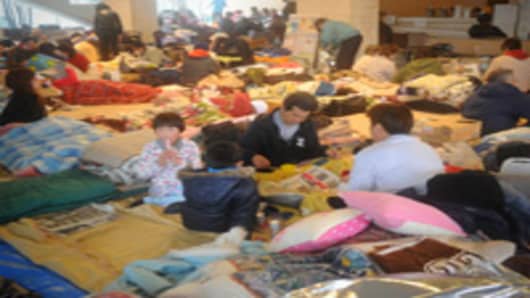A month after the tsunami ripped apart the north-east coast of Japan, 36 families from Rikuzentakata have become the first to shift their few possessions into temporary housing, a move that marks a new beginning but also reinforces anxieties about what lies ahead.
The rows of prefabricated one-storey residences – the first anywhere in the disaster zone – sit on higher land away from the piles of rubble below.
There is a long way to go. So far 1,850 families have applied for temporary homes, says Saeki Suga, head of the construction department at the city office, and includes his own family in the tally. However, he had initially thought the small city would need about 4,000 homes, given the council had counted at least 3,600 that had been destroyed.
In a sign of just how badly this city has been affected by the March 11 earthquake and tsunami, the low number of applications is a result of complete families having been washed away, he says. Mr Suga himself has lost family members and even saw a colleague taken by the tsunami’s relentless waves, unable to help.
Despite reconstruction efforts, the town still looks like a war zone. Close to 1,200 are still missing and more than that are dead. In a town of just 24,000, these are extraordinary numbers.
Miki Terui, her husband and three teenage sons are among the first families to move into the rent-free temporary housing, their names having been plucked out by the mayor in a lottery to decide who moves in first.
They expect to live there for at least two years while their city is being rebuilt.
Each house comes with all the basics needed for daily living, from futons and sheets, through kitchen appliances and utensils, a television and toothbrushes.
These were provided by donations to the Red Cross and other non-profit organisations, Mr Suga says.
Each house has a kitchen and bathroom, with two other small rooms. The Terui boys appeared to take up almost all the space as they stand in one of the walk-in closet type rooms.
For Ms Terui, her family’s move is accompanied by very mixed emotions.
On the one hand, she is delighted that her family can enjoy a little privacy and the semblance of normality that comes with it. On the other, she feels guilty about having such a space when so many others remain in the evacuation centres. There is another factor as well.
“I’m so happy we’ve got this place. But we really need work,” Ms Terui says, talking in her new doorway. “We ran our own business and that’s now gone. We need to get an income. We’ve got children to feed.”
Katsuji Chiba, a member of the city council in charge of one of the evacuation centres located at a public campsite, says: “When reality sets in, they are going to have heavy hearts. People talk about starting from zero, but many are going to have to borrow money to start again, so they’re not starting from zero, they’re starting from minus.”
Future employment is going to be the long-term preoccupation of many families.
Entire industries, fishing being one, have been wiped out as well as thousands of small businesses, such as the Terui family’s dry cleaning store, a third-generation business.
It raises worrying questions about whether people will be forced to search for employment elsewhere, even if they want to stay.
Futoshi Toba, the mayor of Rikuzentakata, has hopes that communities will flourish in these temporary housing areas so a grocery store can be set up by members.
Like many of the staff who are also homeless, Mr Suga spends his nights in the temporary city hall, wrapped in a blanket. He says he has heard that all the temporary housing is slated for completion by the August.
“I’ll put myself into the housing at the end,” he says.



